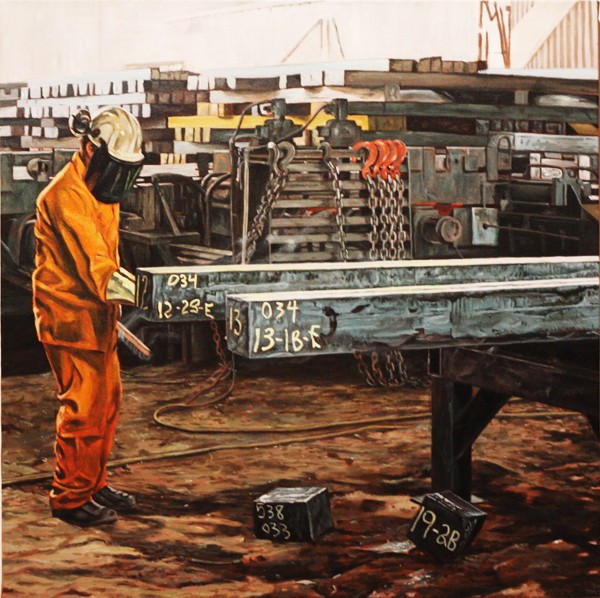Labour’s impact on art, all grown up
Winnipeg General Strike commemorated in Aceartinc exhibit
Upon entering Bringing Home the Bacon at Aceartinc, your eyes are immediately drawn to the mannequin directly to your right. She is revolving on a runway with ultra bright light bulbs that draw even more attention to her. The mannequin sports a sequin dress, her face is dolled up and her limbs are contorted into undesirable positions.
“Re Tale” by Lyndsay Ladobruk shows us how the media controls our every move, down to what we wear and where we shop. Underneath the runway, a recording addresses the way we spend money and how we justify it by making excuses. One of the lines on the cassette says, “We oversimplify because that is the only way to think.”
Bringing Home the Bacon, curated by the University of Winnipeg Art History Students’ Association, commemorates the 90th anniversary of the Winnipeg General Strike by examining the relationships between art and labour.
Featuring video, painting and photography, the exhibit “uses the inspiration of a historic local event to connect with current labour discussions, by drawing attention to the working environment, the working individual, and the work of art itself,” states a press release.
Through Ladobruk’s work, we can see how the media, including television, print and radio, have changed the way we spend and save our money.
A shirt that costs about 27 cents to make is stamped with a logo and sold for a hundred times what it cost to make. Once we pull the shirt over our heads, we become walking billboards for that company.
Around her runway Ladobruk has scattered garbage from a ‘typical’ person’s home, including flyers offering the latest markdowns and the classic McDonald’s noxious waste. There is also a debit receipt that can be interpreted as representing our reliance on our little bits of plastic to get us what we want when we want it; plastic, as opposed to the human-to-human contact that was once common in banks, can be thought of as cold, fake and engineered for our fast-paced lifestyles.
Steve Gouthro’s two pieces, both acrylic on canvas, show two different scenes that could have taken place in the same week, day, or even the same hour.
“Inscription” shows a welder in a sort of day-in-the-life scene. He is working on a piece of metal with his mask on and sparks by his hands.
As you walk further through the gallery, “Furnace in Flames” shows that a massive fire has taken over the building as the flames have crawled up the wall. The flames are licking the walls and the vivid orange glow shows that this fire has already and will continue to destroy anything in its path. What was there before the fire cannot be restored to what it once was, and what is put there after will always have the ghost of the fire etched in the walls and the memories of the workers.
Gouthro’s paintings reflect our current economic situation in the sense that what some people have built up for their whole lives and what they have sacrificed in order to attain it could all be taken away in a split second.
Similarly, Rick Fisher and Don Rice’s video Foundation shows a person slowly sweeping an entire level of an abandoned building. The floor is absolutely deserted and it makes us wonder ‘What is the point of this monotonous work?’ Likewise, years from now people may question our own contemporary actions as they seemingly have no impact on their future lives.
While we are encouraged to strive for individuality, we still must keep inside the parameters society has set for us. Cherie Moses and Colleen Finlayson’s video The Measure of Success is the perfect example of this contradiction.
It takes the everyday scenario of a boss and his employee during a review. The woman is new to the company and while he praises her work, he also shoots her down for not being able to socialize with other employees. The boss emphasizes how important it is to be well liked and to assimilate into the office community, going so far as to say, at “a small place like this, you stand out if you don’t fit in.”
Moses and Finlayson examine how communities interact and in turn, it makes you look at your life and wonder if the people who you are close with are in your life because you have conformed to them.
Published in Volume 63, Number 27 of The Uniter (May 20, 2009)







